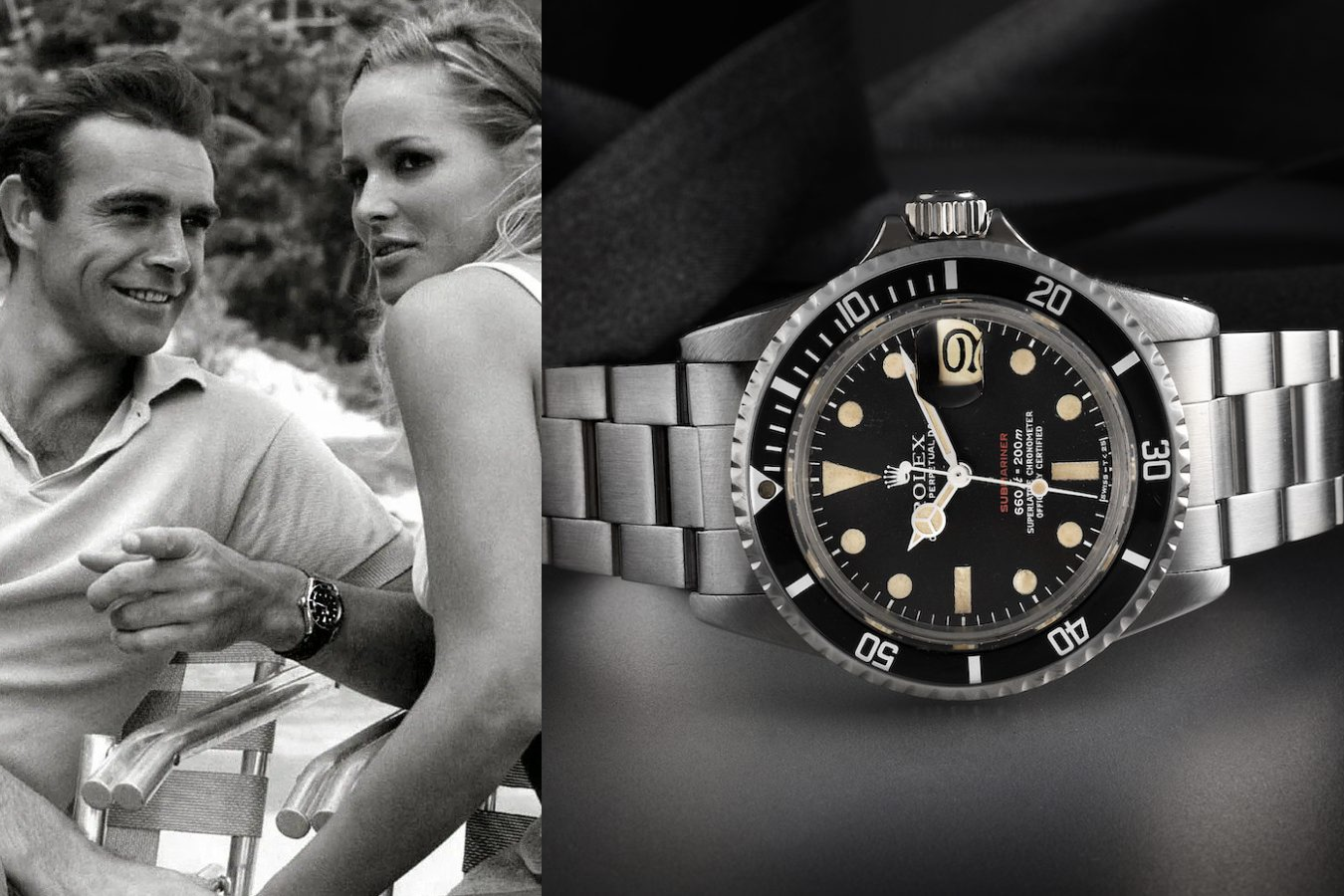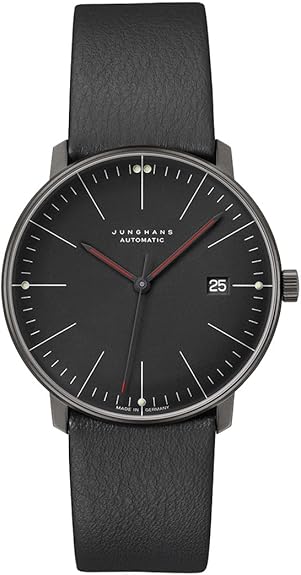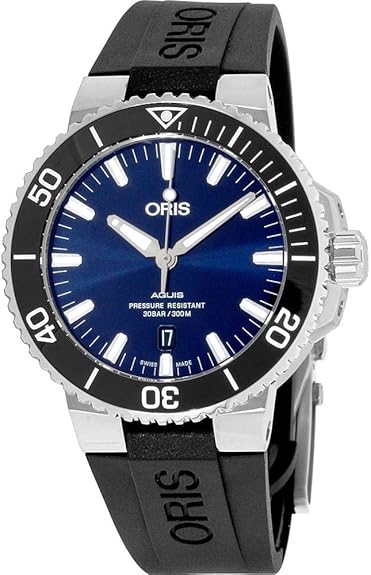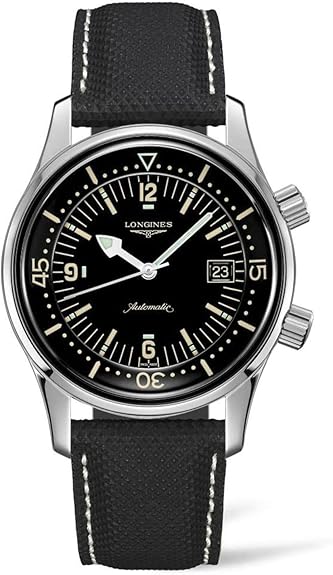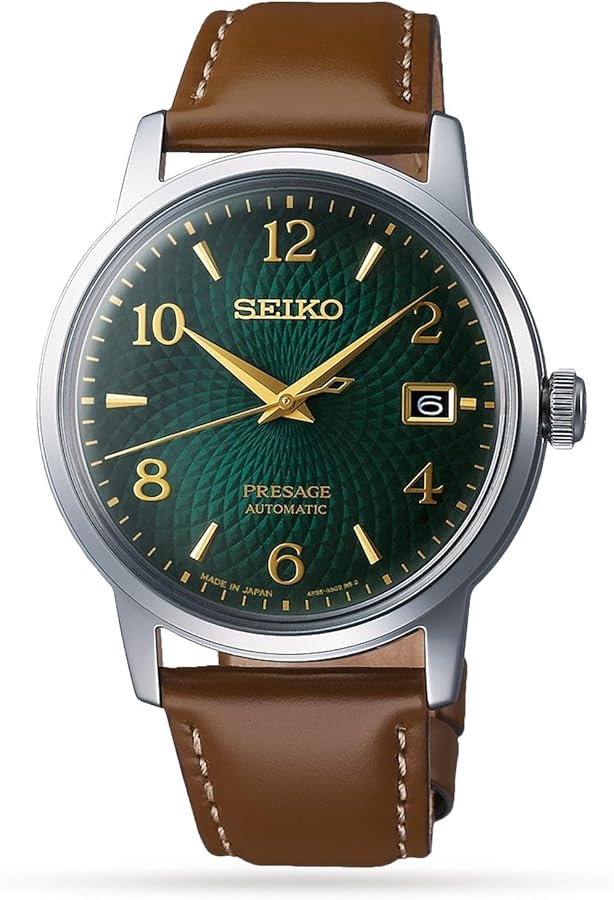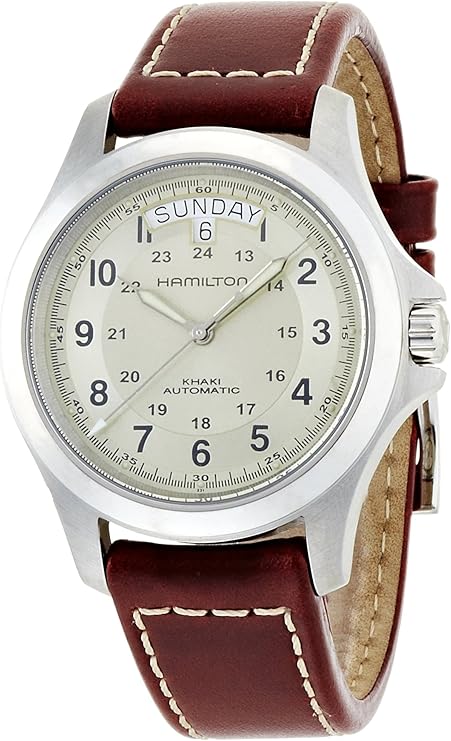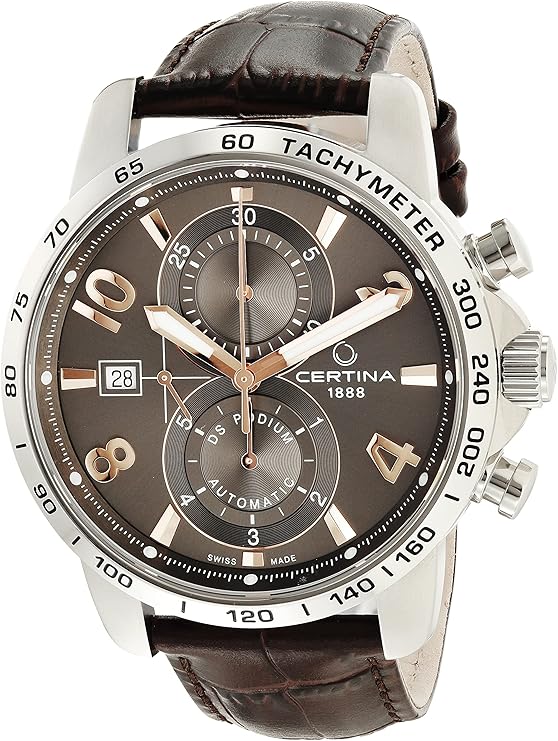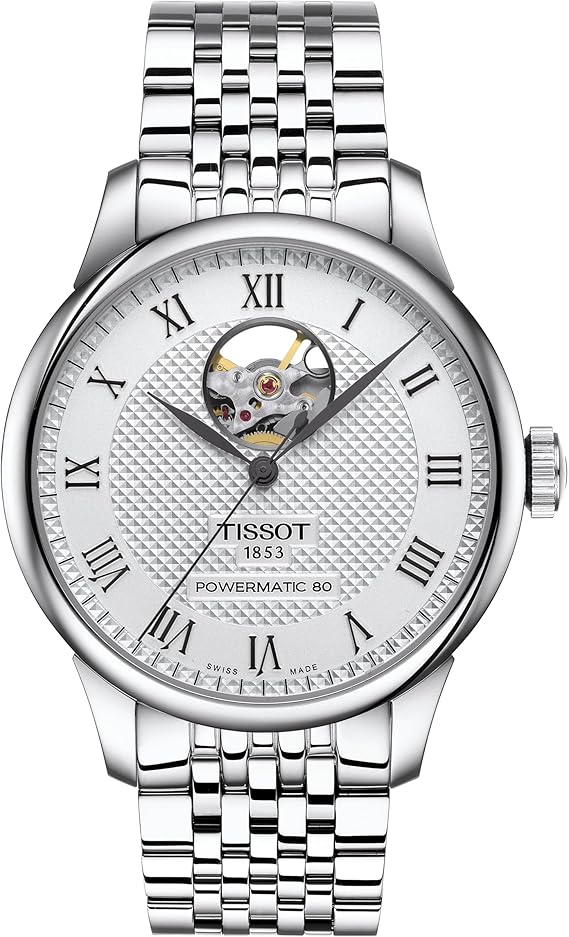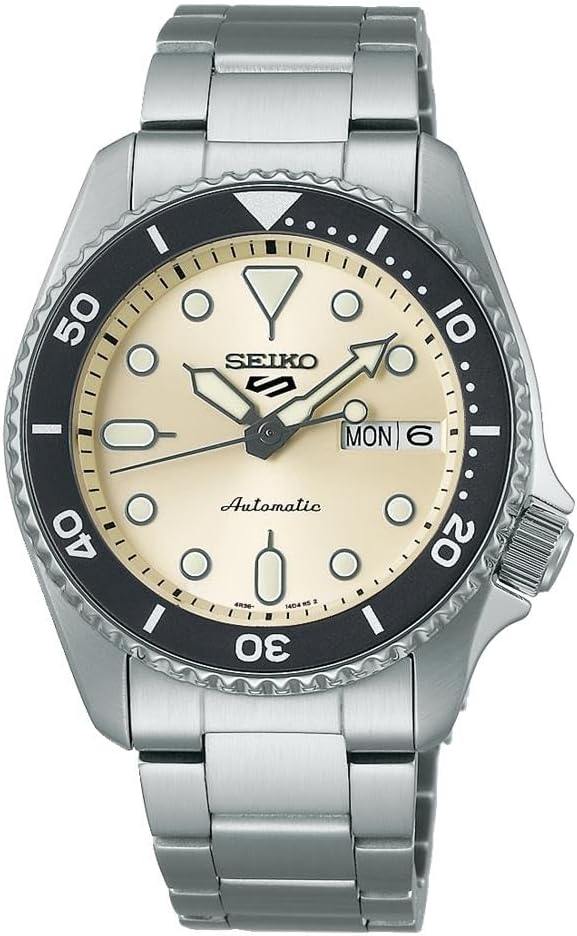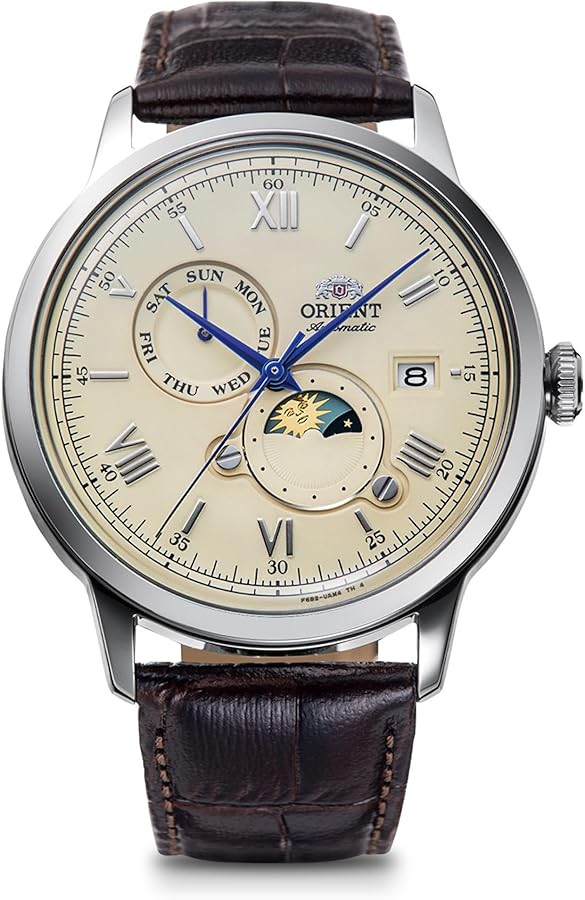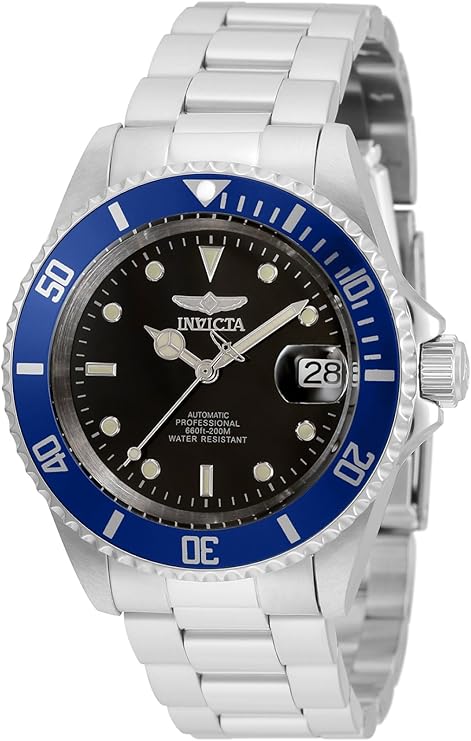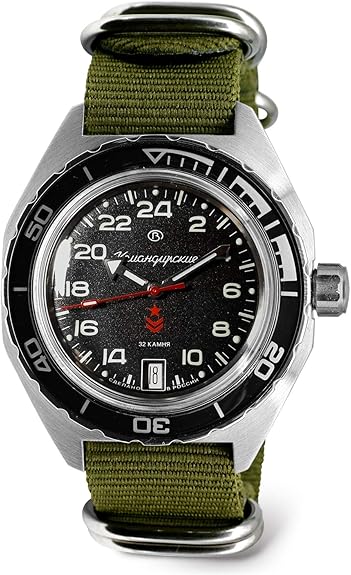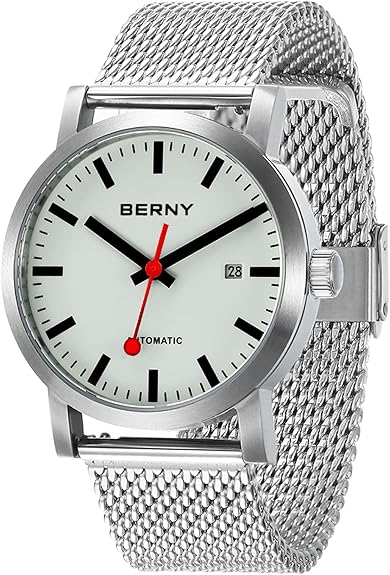As an Amazon Associate, we earn from qualifying purchases.
In a world dominated by digital screens and smartwatches, there exists a thriving realm of mechanical ingenuity where tiny gears, springs, and wheels work in perfect harmony. Automatic watches—self-winding marvels that harness your body’s natural movement—represent not just timekeeping but a connection to centuries of craftsmanship and engineering brilliance.
This journey through the world of automatic watches isn’t just for seasoned collectors. Whether you’re considering your first mechanical timepiece or looking to expand your collection, I’ll guide you through what makes these watches special, their fascinating history, and recommend some exceptional models across various price ranges.
The Magic Behind the Movement
I still remember my first automatic watch—a Seiko 5 gifted by my father. The special-edition model’s exhibition caseback revealed a world I never knew existed: an oscillating rotor swinging hypnotically with each flick of my wrist, tiny gears meshing with precision born from centuries of refinement.
Unlike quartz watches that rely on battery power, automatic watches harness kinetic energy through an ingenious system:
- The Rotor – A weighted semicircle that rotates freely with your wrist movement
- The Mainspring – A coiled metal strip that stores energy as it’s wound
- The Escapement – The heartbeat of the watch that controls the release of power
- The Gear Train – A series of precisely engineered wheels that transfer energy
This symphony of mechanical parts creates something truly special: a watch that, when worn regularly, never needs winding or battery changes. The gentle tick of an automatic watch represents continuous, self-sustained motion—a microcosm of perpetual energy.
Hacking
In the world of watches, “hacking” (or “hacking seconds”) refers to the function where the seconds hand completely stops moving when the crown is pulled out to the position used for setting the time. The main benefit of this feature is that it allows the user to synchronize the watch precisely to a reference time source (like an atomic clock or phone) down to the exact second. When the crown is pulled, a small lever typically stops the balance wheel, halting the entire movement.
This feature was historically important, especially for military personnel, pilots, or anyone who needed to synchronize their watches accurately with others for coordinated timing.
This contrasts with “non-hacking” movements, where the seconds hand continues to run even while setting the time, making precise synchronization more difficult. While not present in all mechanical watches, particularly some older or more basic automatic movements, hacking is a common and desirable feature found in many modern automatic watch calibers from manufacturers like Seiko, Miyota, ETA, and Sellita.
From Pocket to Wrist: The Evolution of Self-Winding
The path to modern automatic watches is paved with brilliant innovations and persistent problem-solving:
The Pioneers
While Abraham-Louis Breguet experimented with self-winding mechanisms in the late 1700s, his “perpétuelle” pocket watches were more proof-of-concept than practical timekeepers. These early attempts relied on an oscillating weight that would move with the wearer’s walking motion—ingenious but imperfect.
John Harwood, a watchmaker from the Isle of Man, revolutionized this concept in 1923 with the first truly viable automatic wristwatch. His design used a pivoting weight that swung in a 300-degree arc, building tension in the mainspring. Though revolutionary, it still had limitations—the rotor could only wind in one direction.
The Watershed Moment
Rolex perfected the concept in 1931 with their “Perpetual” movement featuring a centrally-mounted rotor that could rotate a full 360 degrees. This innovation, still fundamentally used in modern automatic watches, created more efficient winding by capturing energy from even the slightest wrist movements.
Surviving the Quartz Crisis
When inexpensive quartz watches flooded the market in the 1970s, many predicted the death of mechanical watchmaking. Swiss manufacturers saw production plummet from 40 million watches annually to less than 10 million.
Yet something remarkable happened—automatic watches transformed from everyday tools to cherished objects of artisanship. The very “inefficiency” that made them obsolete as mass-market timekeepers became their greatest strength. These mechanical timepieces represented human ingenuity, tradition, and tactile connection in an increasingly digital world.
Why Enthusiasts Choose Automatic
Having worn both quartz and automatic watches for years, I’ve found several compelling reasons why mechanical timepieces continue to captivate:
Living Heritage: Each automatic watch connects you to centuries of watchmaking tradition. When you wind an automatic movement, your actions mirror those of generations before you.
Engineering Appreciation:
A well-made automatic movement can contain over 100 precisely manufactured components working in perfect harmony—all in a space smaller than a quarter.
Sensory Experience: Automatic watches engage multiple senses—the weight on your wrist, the smooth sweep of the seconds hand, and sometimes even the gentle ticking sound of the escapement.
Sustainability: With proper maintenance, an automatic watch can run indefinitely without batteries. Many automatic watches become family heirlooms, passed through generations.
Personal Connection: Automatic watches develop character over time. The movement becomes attuned to your wearing habits, and the case may develop a unique patina that tells your shared story.
Iconic Automatic Timepieces
Some automatic watches have transcended mere timekeeping to become cultural icons and design touchstones:
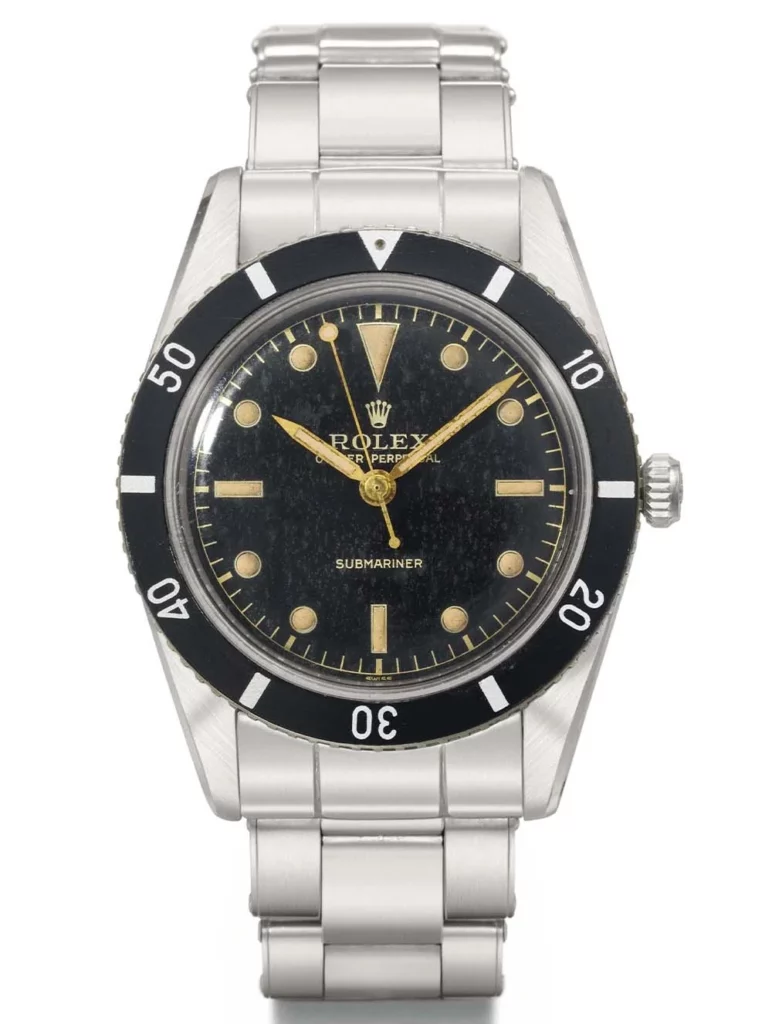
Rolex Submariner (1953): More than just a diving instrument, the Submariner (pronounced: “sub-ma-REEN-er”) defined what a modern sports watch could be. Its influence on watch design cannot be overstated—the rotating bezel, Mercedes hands, and oyster case have been endlessly referenced by other manufacturers.
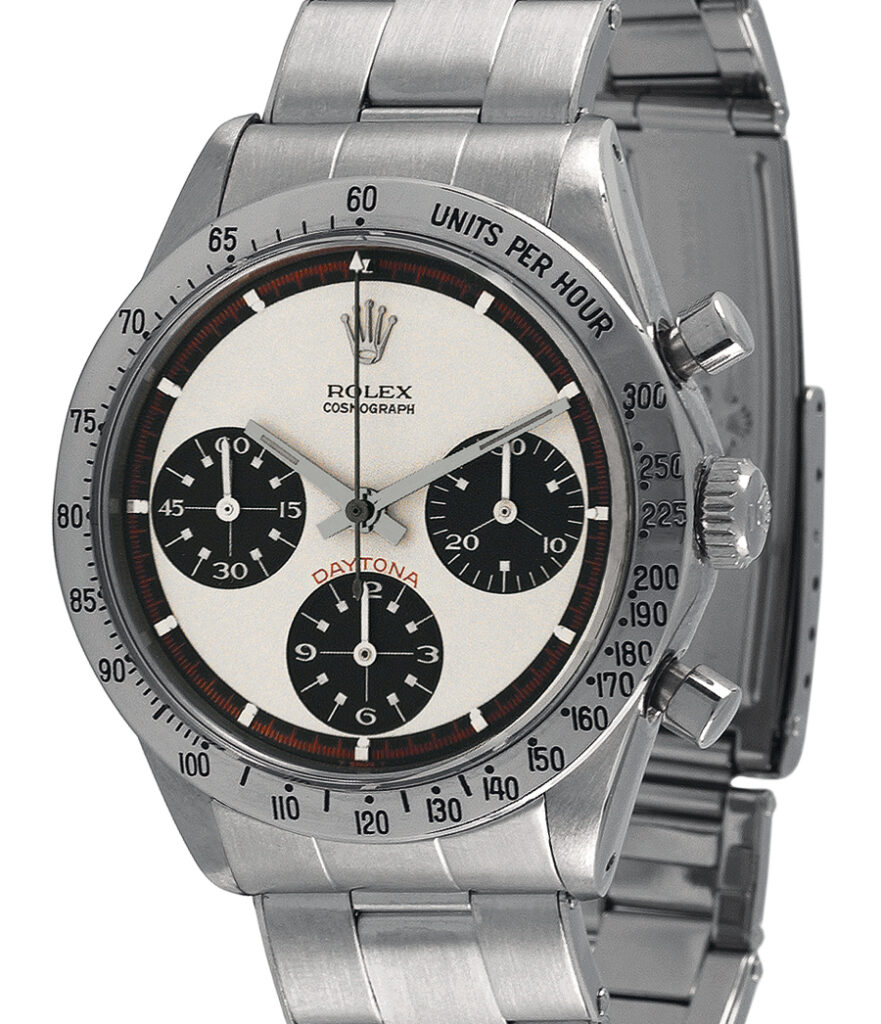
Rolex Daytona (1963): Initially unpopular upon release, the Daytona transformed into perhaps the most sought-after chronograph in history. Paul Newman’s personal model sold for $17.8 million in 2017—the highest price ever paid for a wristwatch at auction.
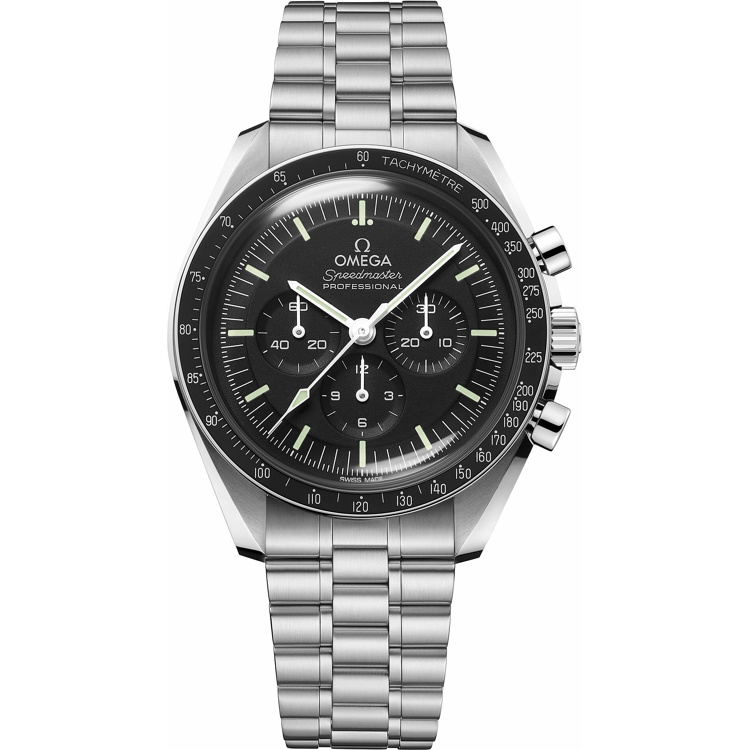
Omega Speedmaster Professional “Moonwatch” (1957): Selected by NASA for all manned space missions, this chronograph became the first watch worn on the lunar surface during Apollo 11. While early models were hand-wound, automatic versions have continued this legacy of exploration and reliability.
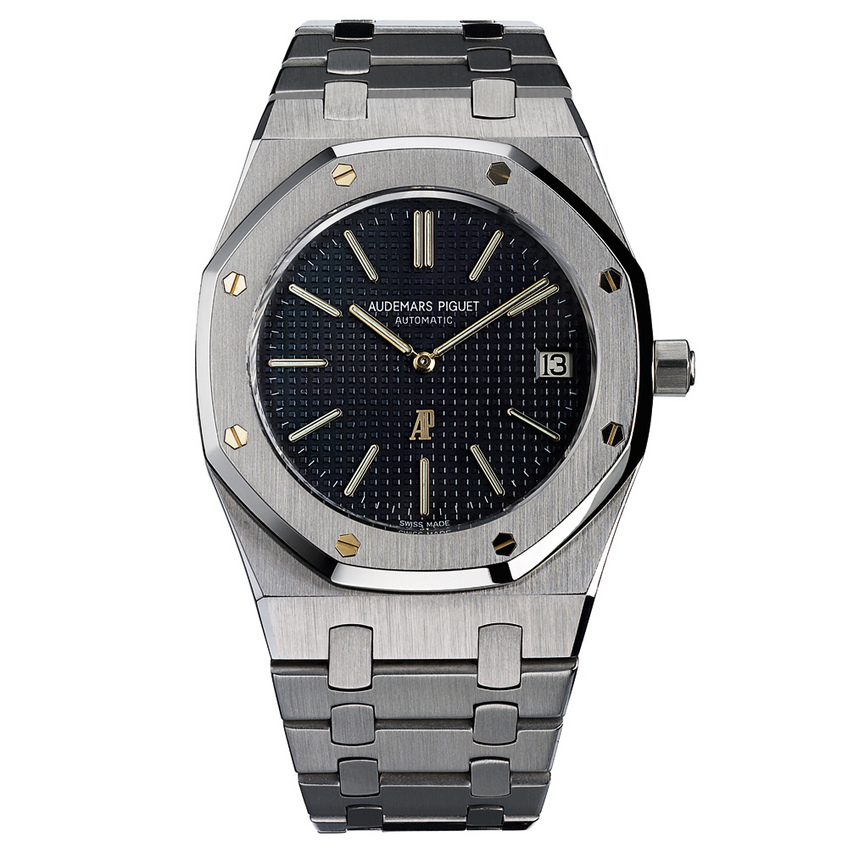
Audemars Piguet Royal Oak (1972): Designed by the legendary Gérald Genta, this luxury steel sports watch with its distinctive octagonal bezel and integrated bracelet saved AP from financial ruin during the quartz crisis and created an entirely new category: the luxury sports watch.
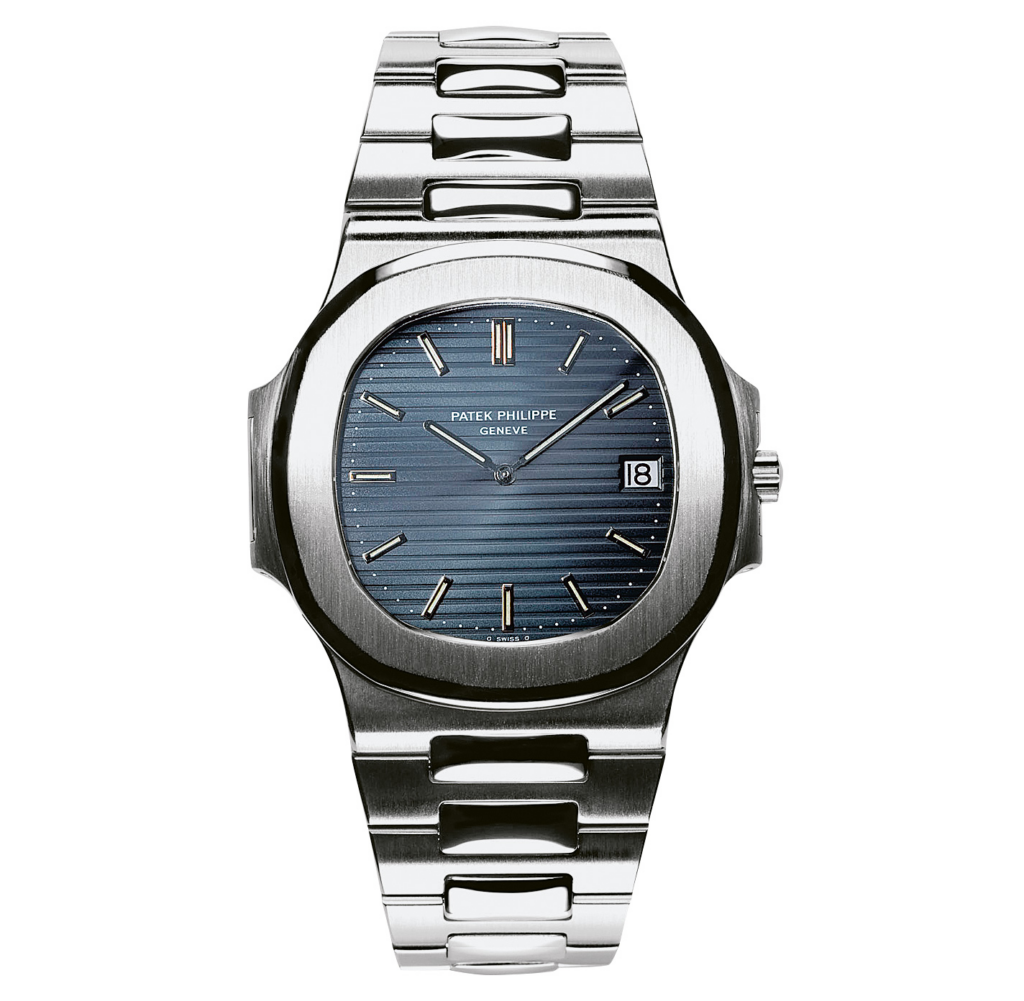
Patek Philippe Nautilus (1976): Another Genta masterpiece, the Nautilus brought Patek’s exceptional watchmaking into a more casual format. Its porthole-inspired case and horizontal embossed dial have made it one of the most desirable watches in the world.
Luxury Features Without Luxury Prices: $1,000-$2,000
TAG Heuer Formula 1 Automatic (affiliate link): This sporty timepiece fuses TAG Heuer’s motorsport heritage with Swiss watchmaking precision. The robust 41mm stainless steel case with sapphire crystal houses a reliable Swiss automatic movement with approximately 42 hours of power reserve. The distinctive black dial with luminous hands and markers offers excellent legibility. Water-resistant to 200m, this versatile watch transitions seamlessly from racing circuits to business meetings without missing a beat.
Junghans max bill Automatic Bauhaus (affiliate link) Embodying the influential Bauhaus design philosophy with its pure minimalism and functional elegance, this sophisticated timepiece features a sleek black dial with understated white indices in a 38mm matte black PVD-coated case. Designed by legendary Bauhaus student Max Bill, it showcases the movement’s celebrated principle that “form follows function” through its mathematical precision and uncluttered aesthetics. Powered by a Swiss automatic movement visible through the exhibition case back, this modern classic pairs versatile style with German engineering excellence, making it a quintessential representation of Bauhaus’s enduring design legacy.
Oris Aquis Automatic Blue Dial (affiliate link): A sophisticated diver’s timepiece combining Swiss craftsmanship with rugged functionality. Featuring a captivating sunburst blue dial that evokes the ocean depths, it’s housed in a robust stainless steel case with a unidirectional rotating bezel for precise dive timing. The watch offers impressive water resistance up to 300 meters, luminous hour markers and hands for underwater legibility, a perfect blend of elegance and performance.
Longines Legend Diver (affiliate link): This faithful reinterpretation of Longines’ 1960s super-compressor dive watch features internal rotating bezel controlled by a second crown. The L888 movement provides a 72-hour power reserve and impressive accuracy.
Mid-Tier Marvels: Exceptional Automatics Under $1,000
Seiko Presage Cocktail Time Mojito (affiliate link): inspired by the Mojito cocktail, the face of this beautiful mens watch features rich green graduated patterning with golden dial indicator markings and even-numbered numerals evoking vintage liquor labels. Paired with a hardlex crystal and Seiko’s reliable 4R35 automatic movement, with a 41-hour power reserve and 50m water resistance, it’s a premium conversation starter .
Hamilton Khaki Field (affiliate link):
Drawing on Hamilton’s military heritage dating back to both World Wars, this field watch embodies rugged functionality with understated elegance. The 38mm or 42mm stainless steel case (depending on variant) houses Hamilton’s H-10 automatic movement with an impressive 80-hour power reserve. The highly legible dial with its distinctive 24-hour markings and luminous hands stays true to its military origins, while sapphire crystal provides modern durability. With 100m water resistance and a versatile aesthetic that works with casual and business attire alike, the Khaki Field represents one of the best value propositions in Swiss-made automatic watches—a true tool watch that can handle decades of adventure.
Certina DS Podium Sport (affiliate link): This Swiss-made sportwatch showcases Certina’s legendary “Double Security” (DS) concept through its robust 100m water resistance and protected crown system. The clean, athletic 41mm case houses the Powermatic 80 movement—a modified ETA caliber delivering an exceptional 80-hour power reserve and antimagnetic Nivachron balance spring. The sunray-brushed dial with applied indices balances sporty functionality with dressy refinement, while the exhibition caseback reveals fine Geneva striping on the movement. As one of Swatch Group’s hidden gems, the DS Podium Sport delivers remarkable Swiss engineering at a price point that belies its technical sophistication and heritage dating back to 1959.
Tissot Le Locle Powermatic 80 Open Heart (affiliate link): This refined timepiece features a guilloché, Roman-numeral, partial skeleton dial that reveals the mesmerizing balance wheel in action. The 39.30mm stainless steel case houses Tissot’s advanced Powermatic 80 movement, delivering an impressive 80-hour power reserve and improved accuracy through its silicon balance spring. The decorated movement—visible both through the elegant dial opening and exhibition caseback—showcases traditional Swiss finishing techniques typically reserved for luxury timepieces. This Le Locle model offers a perfect entry into the world of fine mechanical watchmaking at an accessible price point.
Entry-Level Excellence: Quality Automatics Under $300
Seiko 5 Sports (affiliate link): The revamped Seiko 5 Sports line offers extraordinary value with 100m water resistance, day-date complication, and Seiko’s reliable 4R36 automatic movement (with hacking and hand-winding) visible through an exhibition caseback. Classic diver looks, numerous colorways and bezel variations, and the reliability associated with the Seiko 5 line, make this perhaps the best entry point into automatic watches.
Orient Bambino Sun & Moon (affiliate link): With its domed crystal and vintage-inspired dial, the Bambino punches far above its price class in terms of refinement. Orient’s in-house F6724 movement provides reliable performance and the rare combination of hacking and hand-winding at this price point.
Invicta Pro Diver (affiliate link): While watch enthusiasts often debate Invicta’s design originality, there’s no denying the value proposition of the Pro Diver. With a solid Seiko NH35A movement, 200m water resistance, and classic dive watch aesthetics, it’s a functional automatic for under $100.
VOSTOK | Komandirskie 650541 GMT Captures the essence of Soviet-era military watch design with modern functionality. This robust timepiece showcases a matte black GMT 24-hour dial with contrasting luminous indices. Equipped with a bidirectional rotating bezel, the 650541 offers impressive 200m water resistance. It comes with versatile strap options including stainless steel, resin, nylon, or leather. With its authentic Russian engineering, accessible price point, and genuine historical pedigree, this GMT automatic represents exceptional value for collectors seeking functional timepieces with character that stands apart from mainstream Swiss and Japanese offerings.
BERNY Classic (affiliate link): Offers surprising refinement at its modest price point, powered by the reliable Japanese MIYOTA 8215 movement—a trusted workhorse in the watchmaking industry. This mechanical timepiece features a sleek stainless steel case and a clean dial design that balances modern simplicity with traditional styling cues. The integrated stainless steel bracelet provides both comfort and durability. Despite its affordable positioning in the market, the BERNY Classic incorporates thoughtful details like a display caseback to showcase its automatic movement. For entry-level collectors seeking Japanese movement reliability without the premium brand markup, this watch represents a compelling value proposition in the budget automatic segment.
The Problem with Ultra-Budget Automatics: Why Sub-$80 Watches Usually Disappoint
Automatic watches priced below $80 might seem like incredible bargains, but these timepieces typically cut corners in ways that compromise fundamental functionality. Most utilize unregulated Chinese movements housed in low-grade cases with minimal quality control. While they technically “work” in that the hands move around the dial, their poor timekeeping accuracy—often gaining or losing several minutes daily—undermines their primary purpose.
Consumer experiences with these ultra-budget automatics consistently reveal problems: watches that fail within months, rough winding mechanisms, loose components, and shoddy finishing. Water resistance ratings prove meaningless, and bracelets frequently break with minimal wear. Rather than offering value, these watches ultimately represent false economy—disposable novelties that quickly disappoint.
For those genuinely interested in mechanical watchmaking without breaking the bank, most horological experts recommend starting with established entry-level models in the $100-200 range. These proven timepieces deliver reliable performance and authentic craftsmanship that budget imposters simply cannot match.
The Joy of Collecting
As you explore the world of automatic watches, remember that the best timepiece isn’t necessarily the most expensive or prestigious. The most meaningful watches become companions on your journey—marking milestones, accompanying adventures, and eventually telling your story through their ticks and tocks.
Consider these approaches to building a collection:
One Watch Collection: Invest in a versatile automatic that can transition from casual to formal settings. Models like the Sinn 556 or Tudor Black Bay 36 can serve as your only timepiece for decades.
Purpose-Driven Collection: Assemble watches for specific contexts—perhaps a diver for weekend adventures, a slim dress watch for formal occasions, and a field watch for everyday wear.
Heritage Exploration: Seek out watches that connect to your personal history, whether that’s your nation’s watchmaking tradition, your profession’s timekeeping tools, or designs from eras that resonate with you.
Regardless of your budget or collecting philosophy, the world of automatic watches offers endless fascination. These small mechanical wonders continue to captivate because they represent something increasingly rare in our disposable society—objects built to last generations, improving with time and care.
The next time you check the time on your automatic watch, take a moment to appreciate the hundreds of components working in harmony on your wrist, powered by nothing more than your natural movement through the world. In an age of planned obsolescence, there’s something profoundly satisfying about wearing a mechanism designed for perpetual motion.

